More ancient than the Golden Fleece or Roman Eagle, more honourable than the Star and Garter …
In these words the ritual seeks to impress upon him who has been invested with the white lambskin apron its value and its importance.

Philip, Duke of Burgundy, in 1429
IMAGE LINKED: wikimedia Attribution 4.0 International (CC BY 4.0)
The Order of the Golden Fleece was founded by Philip, Duke of Burgundy, in 1429.
The Roman Eagle was Rome’s symbol and ensign of power and might a hundred years before Christ.
The Order of the Star was created by John II of France in the middle of the Fourteenth Century.
The Order of the Garter was founded by Edward III of England in 1349 for himself and twenty-five Knights of the Garter.
It is commonly supposed that the apron became the “badge of a Mason” because stonemasons wore aprons to protect their clothing from the rough contact of building material.
But the apron is far, far older than Golden Fleece or Roman Eagle, than the Star or Garter, than the stonemasons of the Middle Ages – aye, older than the Comacine Masters, the Collegia of Rome, the Dionysian Artificers who preceded them.

Grabkammer des Kenamun, Oberhaushofmeister des Königs, Szene: Pfeilträger by Maler der Grabkammer des Kenamun circa 1448-1422 BC
IMAGE LINKED: wikimedia Attribution 4.0 International (CC BY 4.0)
The Hebrew prophets wore aprons and the high priests were so decorated. In the mysteries of Egypt and of India aprons were worn as symbols of priestly power.
The earliest Chinese secret societies used aprons; the Essenes wore them, as did the Incas of Peru and the Aztecs of Mexico.
Throughout the Old Testament are references to lambs, often in connection with sacrifices, frequently used in a sense symbolic of innocence, purity, gentleness, weakness, a matter aided by colour, which we unconsciously associate with purity, probably because of the hue of snow.
This association is universal in Freemasonry, and the initiate should strive to keep his apron white and himself innocent.
His badge of a Mason should symbolize in its colour the purity of his Masonic character; he should forever be innocent of wrong toward all but “more especially a brother Mason.”

Entered Apprentice Freemason
IMAGE LINKED: wikimedia Attribution 4.0 International (CC BY 4.0)
With the presentation of the apron the lodge accepts the initiate as worthy.
It entrusts to his hands its distinguishing badge. With it and symbolized by it comes one of the most precious and most gracious of gifts: the gift of brotherhood.
Lucky the Entered Apprentice who has the wit to see the extent and the meaning of the gift; thrice lucky the lodge whose initiates find in it and keep that honour, probity and power, that innocence, strength, and spiritual contact, that glory of unity and oneness with all the Masonic world which may be read into this symbol by him who hath open eyes of the heart with which to see.
In the words of the Old Dundee Lodge – Apron Charge:
It is yours to wear throughout an honourable life, and at your death to be placed upon the coffin which shall contain your mortal remains and with them laid beneath the silent clods of the valley.
Let its pure and spotless surface be to you an ever-present reminder of a purity of life and rectitude of conduct, a never-ending argument for nobler deeds, for higher thoughts, for greater achievements.
And when at last your weary feet shall have come to the end of their toilsome journey, and from your nerveless grasp shall drop the working tools of life, may the record of your thoughts and actions be as pure and spotless as this emblem…
For thus, and thus only, may it be worn with pleasure to yourself and honour to the Fraternity.
Article by: Carl H. Claudy
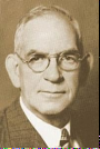
Carl Harry Claudy (1879 – 1957) was an American author, magazine writer, and journalist for the New York Herald.
His association with Freemasonry began in 1908, when, at the age of 29, he was raised a master Mason in lodge Harmony No. 17 in Washington, DC. He served as its master in 1932 and eventually served as Grand Master of Masons in the District of Colombia in 1943.
His Masonic writing career began in earnest when he became associated with the Masonic service Association in 1923, serving as associate editor of its magazine, The master mason, until 1931.
Under his leadership the service Association was brought to a place of predominance through his authorship and distribution of the short talk bulletin which made his name familiar to virtually every lodge in the country.
 Old Tiler Talks - Eyes Lifted High The Old Tiler Talks first published in 1925, by Carl Claudy, is a series of short anecdotal stories told in the setting of a new member asking an old tiler for his opinion on various masonic topics. These short articles are still very relevant, 100 years on, and hopefully provide some insight to new members today. |
 Old Tiler Talks - Masonic Libraries The Old Tilers talks first published in 1925, by Carl Claudy, is a series of short anecdotal stories told in the setting of a new member asking an old tiler for his opinion on various masonic topics. These short articles are still very relevant, 100 years on, and hopefully provide some insight to new members today. |
 Old Tiler Talks - So Many Rascals "Why are there so many rascals in the Fraternity, and why don't we turn them out?" a new member voiced to the old tiler for his opinion. These short articles are still very relevant, 100 years on, and hopefully provide some insight to new members today. |
 Old Tiler Talks - The Greatest Work The Old Tiler asked, "what is the greatest work of Masonry?" The New Brother sat by the guardian of the door and pulled out his cigar case. - Another instalment of wisdom by Carl Claudy, The Greatest Work |
 Old Tiler Talks - Why Men Love Freemasonry The 'Old Tiler Talks' first published in 1925, by Carl Claudy, is a series of short anecdotal stories told in the setting of a new member asking an old Tiler for his opinion on various Masonic topics. These short articles are still very relevant, 100 years on, and hopefully provide some insight to new members today. |
 Old Tiler Talks - Seeking a Little Light The Old Tilers talks first published in 1925, by Carl Claudy, is a series of short anecdotal stories told in the setting of a new member asking an old tiler for his opinion on various masonic topics. These short articles are still very relevant, 100 years on, and hopefully provide some insight to new members today. |
 The new mason laments that practically speaking, Masonry is a failure, and it depresses me … Masonry cannot be a failure, because men fail as Masons. The Old Tilers talk by Carl Claudy |
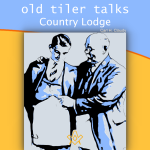 Old Tiler Talks - Country Lodge A lesson in the importance of an open mindset to observe, not to judge, but to learn and accept that we can achieve the desired outcome employing a different process. by Carl Claudy |
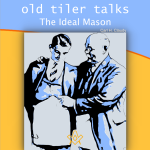 Old Tiler Talks - The Ideal Mason "What's your ideal of Freemasonry?" asked the Younger Mason - A short anecdotal story told in the setting of a new member asking an old tiler for his opinion on various masonic topics by Carl Claudy |
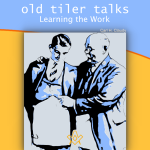 Old Tiler Talks - Learning the Work A short anecdotal story told in the setting of a new member asking an old tiler for his opinion on various masonic topics by Carl Claudy |
 Masonic first appointments and promotions might appear to be inequitable for one point a view, but some times, one point does not show the whole picture. A perfectly articulated story by Claudy, we should not compare one persons abilities with another. |
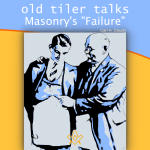 Old Tiler Talks - Masonry's 'Failure' Masonry fails because it doesn’t interest men sufficiently to make them practice what they preach. A perfectly articulated story by Claudy Masonry does not fail men. Men fail Masonry. Masonry has the teachings. |
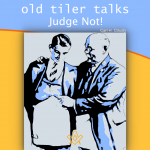 A perfectly articulated story by Claudy reminds us of a lesson from the Second Degree Charge; in the decision of every trespass against our rules, judge with candour, admonish with friendship, and reprehend with mercy. |
 Old Tiler Talks - A Masonic Speech A Masonic Speech - I can tell you the essence of appeal. It is drama. If you want your hearers to hang on your words, dramatize your subject |
 Old Tiler Talks - A Mason's Christmas A Mason's Christmas - Do you believe in Christmas celebrations should be held by the lodge ? Should members be asked to contribute to one and engage in Christmas festivities ? What is the old tilers take on this ? |
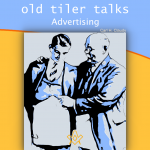 Advertising - We would do more good in the world if we advertised ourselves more… Why ? |
 Uncover the mystery behind one of the oldest and most widespread symbols denoting God. |
 Do you want to discover the originals of the five points of fellowship ? |
 The mystery behind the two great pillars that stood at the porchway entrance of King Solomon Temple |
 Three numbers, what are their masonic significance? Pythagoras has something to say about them |
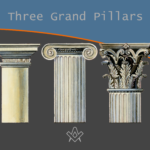 What are the Three Grand Pillars ?, wisdom, strength, and beauty - then later we hear of the Doric, Ionic, and Corinthian columns |
 This emblem contains more real food for thought than any other in the lecture of the Sublime Degree. |
 The Hiramic Legend is the glory of Freemasonry; the search for that which was lost is the glory of life |
 How are the Fellowcraft's five steps connected the five senses of human nature |
 How to explain the principle tents of the craft to a newly made brother |
 What are the lesser lights and where are they placed on our Lodges |
 Like so much else in Freemasonry the Middle Chamber is wholly symbolic |
 In the true sense of the words Freemasonry is not a secret society but a society with secrets. |
 Three Great Lights – the Volume of the Sacred Law, the Square, and the Compasses |
 Entered Apprentice Lambskin Apron; More ancient than the Golden Fleece or Roman Eagle, more honourable than the Star and Garter ... |
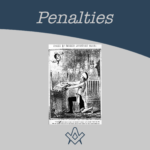 To the initiate, the penalty in his obligation comes with a shock of surprise and sometimes consternation. |
 What is a point within a circle |
masonic knowledge
to be a better citizen of the world
share the square with two brothers

click image to open email app on mobile device









